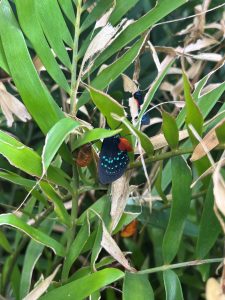
There have been Atala butterflies sightings in and around Polk County, and while there is much information on the butterfly and its history of near extinction, it is important for homeowners and landscape managers to be on the lookout when they spot damage to coontie cycad in the landscape.
If you notice damage on your coontie cycad make sure you properly identify what is going on. While coontie cycads do not have a lot of pest problems, they do have a few, and identification prior to management is extremely important. Find out more about the coontie and related pest issues here.
Feeding damage from caterpillars looks like chewed leaves. Caterpillars are feeding on their larval food source, which for the Atala is specific to the coontie. You may walk out to the yard and see the damage and then locate the caterpillars, which we would suggest that you leave alone. If severe damage has occured to the plant, you may want to cut it back and allow it to regrow. You can see in the photos below what damage to the plants look like when caterpillars have been feeding.
Enjoy observing this amazing insect and use caution if you want to manage the pest on your plants.
Find out where the Atala has been found by visiting iNaturalist.
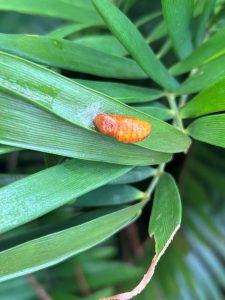
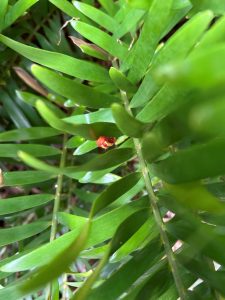
More information on the Atala butterfly can be found here:
How a small butterfly is making a remarkable comeback in Florida
A Tale of Resurgence: Coontie Cycads
A Tale of Resurgence: Atala Butterflies
Damage to coontie cycads due to the feeding of the Atala butterfly caterpillar–not to worry, your plants will recover without any intervention!

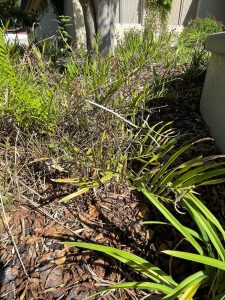
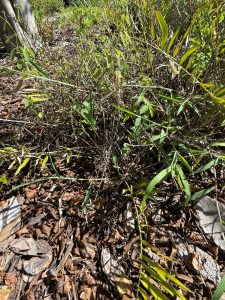
For more information, contact UF/IFAS Extension Polk County at (863) 519-1041 or visit us online at http://sfyl.ifas.ufl.edu/polk. The Plant Clinic is open Monday-Friday, 9:00 am-4:00 pm to answer your gardening and landscaping questions. Give us a call or email us at polkmg@ifas.ufl.edu.
If you are not in Polk County, Contact your local UF/IFAS Extension Master Gardener Volunteer Plant Clinic.
The Florida Master Gardener Volunteer Program is a volunteer-driven program that benefits UF/IFAS Extension and the citizens of Florida. The program extends the vision of the University of Florida/Institute of Food and Agricultural Sciences, all the while protecting and sustaining natural resources and environmental systems, enhancing the development of human resources, and improving the quality of human life through the development of knowledge in agricultural, human and natural resources and making that knowledge accessible.
An Equal Opportunity Institution.
 0
0
